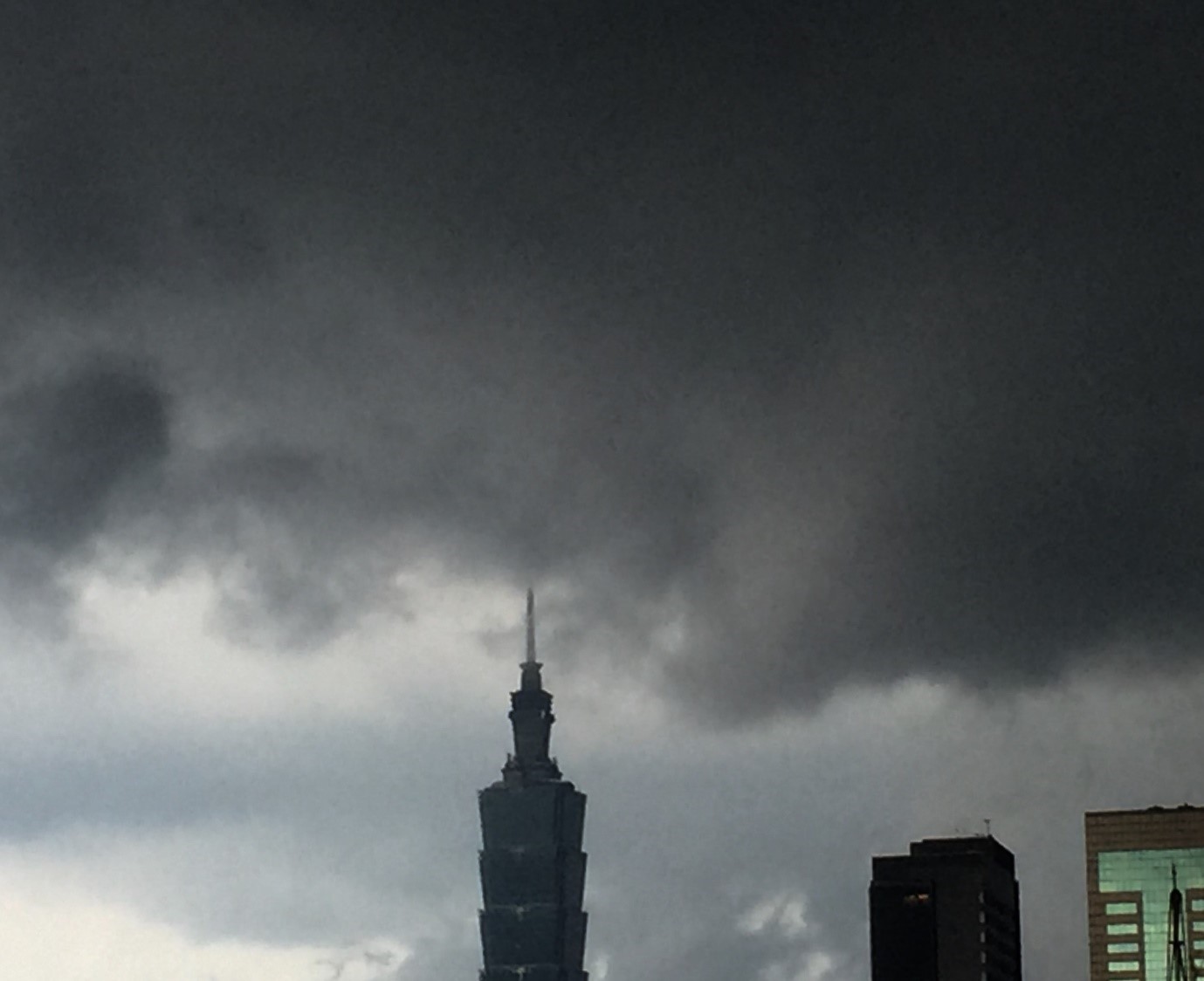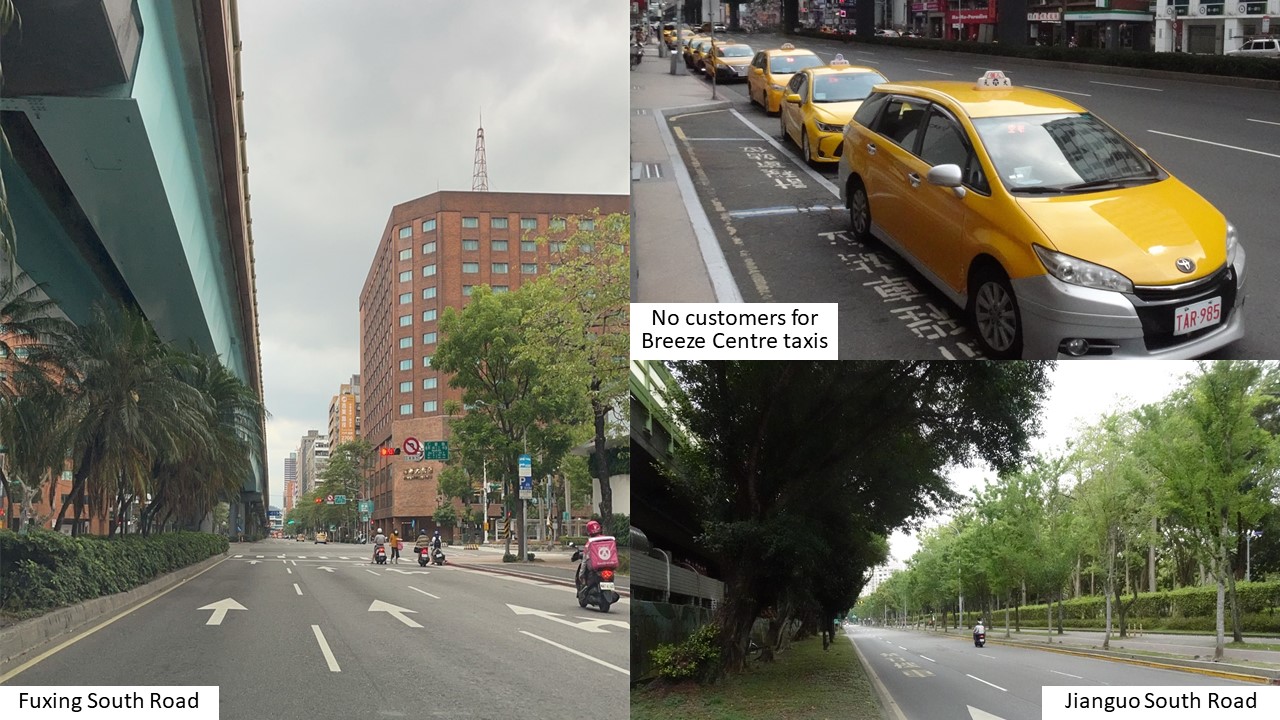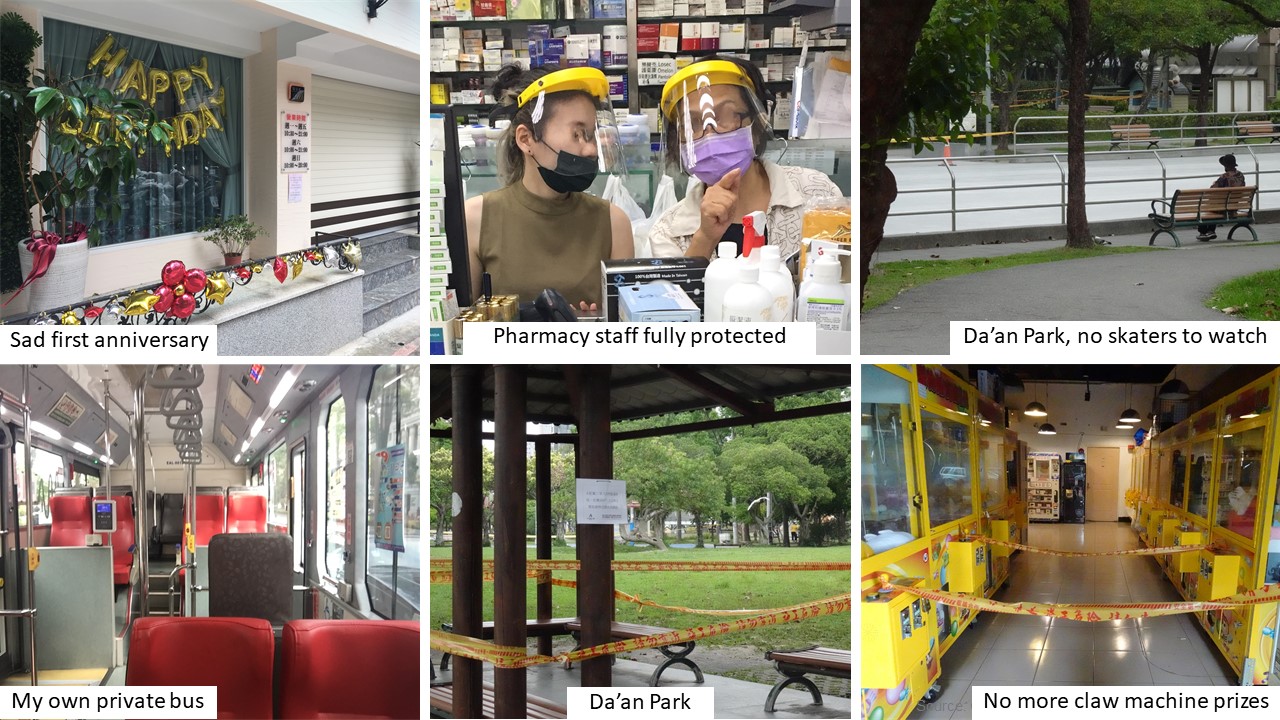Economy & Business
Taiwan's escalating Covid-19 pandemic
Covid-19 is here, so what’s next for Taiwan?
By Mike Jewell

For most of the last 18 months, we’ve led a charmed life in Taiwan. There was a nervy month or two right after Chinese New Year last year, but, by May, our situation was stabilising, domestically transmitted cases had disappeared, and the government began easing restrictions. To some acclaim worldwide, the Chinese Professional Baseball League opened with fans in attendance, and, in June, it was considered safe for major cultural venues to hold events again.
By the second half of the year, consumer confidence was starting to return, and life looked and felt much as it had done in 2019, apart from the absence of foreign visitors and the fact that we couldn’t go abroad for holidays. Only around 10% of staff had worked from home at all and WFH quickly dropped off the radar. The school year proceeded uninterrupted, eating out became the norm once more and domestic tourism went through the roof, as the economy defied global predictions of gloom.
It wasn’t all completely “normal”, with masks mandatory on public transport, new cases of Covid-19 reported every day among the few travellers who entered the country and occasional domestic clusters, notably around a Taoyuan hospital just before CNY. However, the general feeling was relaxed and positive; everything was under control.
Déjà vu all over again? Not exactly
Back in April we all knew there was another outbreak, centred on China Airlines pilots, their families and workers at the airport Novotel, but that’s a quarantine hotel, so surely there was zero chance the virus would get out, right? Even when Health Minister Chen Shih-chung (陳時中) warned on May 3rd that local transmissions were on the brink of spreading more widely, we all felt that, with just a few cases, it would surely be corralled quickly. Yes, we talked a bit about it over dinner in the restaurant or while having a drink at the bar, but it was fine. We’d been here before last year and look how well things turned out.
Then everything changed.
On 11 May, outdoor gatherings of over 500 people and indoor gatherings of over 100 people were abruptly banned on the back of seven new domestic cases in northern Taiwan. Worse was to come. Three days later 30 domestic cases were announced. 30! An unprecedented number, which induced a state of collective shock and, on May 15th, the CECC properly sounded the alarm bells, introducing a Level 3 alert in Taipei and New Taipei, alongside a previously unimaginable 185 new domestic cases.
Since then, new cases have been over 400 every day, restrictions on movement have become ever more severe and the Level-3 alert now covers the whole of Taiwan and has been extended until at least 14 June.
Unlike last year, schools have been shut down and “work from home” has been widely implemented, across many Taiwanese businesses as well as international firms. A walk in the park – properly masked and keeping as much distance as possible from others – is still permissible, but all other leisure activities have been stopped and all eateries and all watering holes, alcoholic and non-alcoholic alike, can only provide takeout services. Many beaches have been closed and many hiking trails are off limits. The message from the government is simple – “don’t go out, unless you have to…and keep calm”.
People have taken the first part of this message to heart and the great majority are following the official line to the letter and with minimal complaint. Taiwan’s cities are largely deserted and the scenes from around the island resemble the early pandemic pictures we saw from Europe and elsewhere a year ago – ghost towns.

Taipei: (left) Fuxing S Rd; (top right) hopeful taxis lined up outside Breeze Center; (bottom right) Jianguo S Rd.
The images are staggering and the statistics underlying them similarly so. Google’s latest mobility reports show just how much we’ve reduced our going out since the Level-3 alert came in (see the charts below). Leisure outings have fallen right off and even going to work is down by 18%.

These charts show how quickly we reacted to the government’s urgings to stay home, but there is also clear evidence of the immediate reaction to the imposition of the Level-3 alert on 15 May, with a mad rush to the shops to stock up on essentials like instant noodles, fresh pork, hand sanitiser, and, of course, toilet rolls!

Apple Mobility data provide further evidence of the dramatic change in behaviour, with walking outside down by 37%, car journeys down by 43% and use of public transport fully 79% lower than normal.
There is no doubt the dramatic surge in coronavirus cases has come as an almighty shock to a population which had begun to believe it was safe from the disease within the boundaries of Fortress Taiwan, but the readiness of people to accept the new restrictions and assist the authorities in regaining control is admirable and a source of hope that the situation can be turned around relatively quickly.
Where are we now?
Overnight the national mindset changed. It has not descended into panic, but there is intense nervousness accompanying the sudden realisation that, despite all the success of the last year of keeping Covid at bay, we are no more immune than any of the basket cases elsewhere in the world. Consumer confidence, which was cautiously building, has already dropped back and the Taiex has taken a big hit. Domestic businesses will again suffer, as they did in the first quarter of 2020, especially the Food and Beverage sector, which is, to all intents and purposes shut down. And, for all the growth Taiwan has enjoyed recently in export markets, those trading internationally still have major issues to grapple with. The National Development Council has announced a new relief package, worth NT$210 billion, which is expected to be passed on 3 June, but the impact on business remains unclear.
One friend summed it up like this:
“Where do I start...golf courses are all closed, gyms closed, pools closed, schools closed, beaches closed, bars closed; our office is working from home, staff paranoid, raw material price increases, container shortages, record freight rates, difficult to secure cargo space on ships, and I thought 2020 was a challenge!”
As I write this, there is no obvious end in sight, with hundreds of new cases reported every day. Most worryingly, cases are no longer limited to a small number of defined clusters – China Airlines and the Novotel, the “Lion King’s” circle and the Yilan amusement arcade – but are popping up in so many different places, like banks, offices in 101, among MRT staff, police officers, care homes, hospitals and clinics, food delivery drivers and the student fraternity. Then there is the now infamous Wanhua teahouse subculture.
Taipei and New Taipei remain the epicentre and all of Taipei’s 11 districts have recorded cases, but the problem is nationwide, and the domestic outbreak is now five times the size of the imported case load.

As the numbers have been climbing, Taiwan’s performance and strategy have come in for considerable scrutiny. The consensus is that the current wave was brought in by returning China Airlines pilots and the virus got out partly because of over confidence on the part of the government which relaxed the quarantine requirements for non-vaccinated pilots and other crew members from five days to three and partly because of failure on the part of the Novotel to observe properly the pandemic prevention protocols, putting some quarantining pilots and flight crews in the same building as ordinary guests. While Taiwan remains closed to foreign tourists, the hotel had been running a promotion for domestic tourists to boost occupancy rates.
The first cases were two pilots who had flown a cargo flight together to the US. Other pilots later tested positive, some of whom had gone to bars and restaurants before being confirmed as having the virus. A hotel housekeeping manager also caught it. That was it, the fortress had been breached. The virus then spread through the community, eventually making its way to Wanhua's "tea houses".
Professor Chen Chien-jen (陳建仁), the former vice-president and renowned epidemiologist, told the BBC that Taiwan failed to look at Japan's adult entertainment industry - which at one point was also a hotbed of infections - before it was ordered shut. "We didn't learn the lesson from Japan and reflect that Taiwan might have these same issues," he said. Tea houses are an especially fertile breeding ground for viruses. They have few windows and poor ventilation, while close contact -- including sharing drinks or singing together -- can allow infections to spread rapidly. The situation is compounded by customers’ reluctance to admit they have been to these clubs, which makes tracing coronavirus cases even harder. Such was the case with the Lion King.
Where do we go from here?
First off, let’s go with the second part of the government’s advice and not panic. A simple comparison of our situation with that in Austria, for example, would suggest that Taiwan is far better placed. In Austria, bars and restaurants have just reopened, as have schools, theatres and galleries. There is social distancing and people must wear masks, but the borders are open and yet Austria has six times as many new coronavirus cases a day per head as Taiwan. Europe is opening up rapidly in a desperate attempt not to lose another holiday season, even though the number of people being infected every day is much higher than it was at the peak of the first wave in 2020.
Up to the start of May, Taiwan’s strategy had focussed almost entirely on stopping the virus at the border and it seemed to be working for a long time, but, as various experts have pointed out, it was almost inevitable that there would be failures somewhere along the line and, without additional controls, we would be faced with the sort of community outbreak we now have. According to Associate Professor Alex Cook of the National University of Singapore (NUS), quoted in a recent BBC article, Taiwan's situation is "a reflection of the constant risk of a strategy that puts too much emphasis on border control and not enough on measures to prevent within country spread".
The Tsai administration has responded with the wide-ranging restrictions I have already discussed and, so far, people have been extremely compliant. However, these measures are reactive and necessarily short-term. Even if they are effective, the long-term solution is still to be properly addressed. Closed borders, lockdowns and government subsidies will eventually have to give way to a more open policy.
Short of allowing the disease to run unfettered through the population in an effort to create natural herd immunity, irrespective of the cost in human life, the only option is vaccination and here Taiwan is some way behind.
To date, less than 1% of the population have been immunised, a level way below many other countries – Israel 63%, Germany 40%, Singapore 36%, Hong Kong 17% to name a few.
The inequity of the global supply chain is, of course, hugely contentious and, in the current geopolitical environment, it’s hard to envisage Taiwan being anywhere near the front of the queue. However, there has been an apparent lack of urgency up to this point over acquiring vaccines, coupled with a high level of public scepticism.
The situation now seems to be changing, with more official attention being given to the vaccination programme and more positive messaging coming out from the authorities. There are reports of the government much more actively seeking out supplies than was previously the case, although politics is never far away, and President Tsai has openly accused China of blocking a major deal with Pfizer/BioNTech. Small batches of vaccines have arrived in the past week and much larger numbers are promised within the next two months – 2 million doses in June and 10 million by the end of August. Furthermore, there is talk of domestic vaccines being authorised for use in July, albeit without the support of the normal phase 3 clinical trials.
Looking back, the success of the border control policy induced a strong sense of complacency and allowed many of us – myself included – to adopt a “wait-and-see” attitude. The initial slow start to obtaining vaccines meant that the first doses didn’t start rolling out until late March, but bad press for the AstaZeneca offering, coupled with the low case count, resulted in a high degree of public scepticism that was further enhanced by reluctance among the medical community to get jabs. The slow uptake allowed the government to start offering shots to anyone who wanted them, but still interest was low. A YouGov survey in early May found that just 40% were willing to be vaccinated, the second lowest among 21 places polled around the world.
Since the outbreak, demand for vaccines has increased dramatically and my own latest medical consultation this week would indicate that the medical community are getting behind the programme, promoting the idea of immunisation much more forcefully, with the proviso that supplies are forthcoming.
I have to say that I am far from comfortable with the rapidity with which vaccines are being shoved into people’s arms. Many of the precautionary principles that normally govern drug and vaccine developments seem to be being overlooked and that makes me distinctly uneasy. The potential upside of mass vaccinations is huge, saving millions of lives and restoring order after the havoc the virus has created. Here in Taiwan, too, it seems we are moving into the next phase of getting to grips with the virus. For now, though, scenes like this will be a familiar part of our daily life, but hopefully not for too long.
